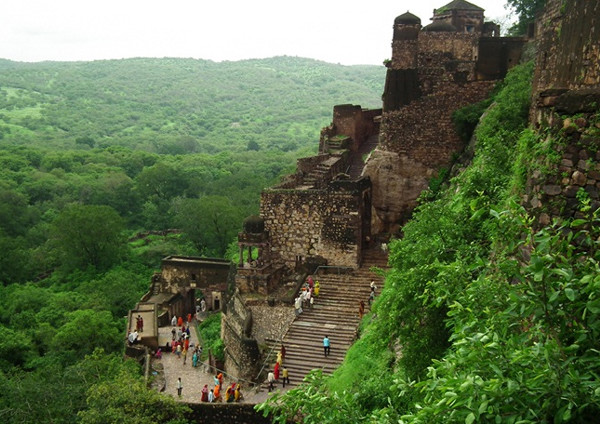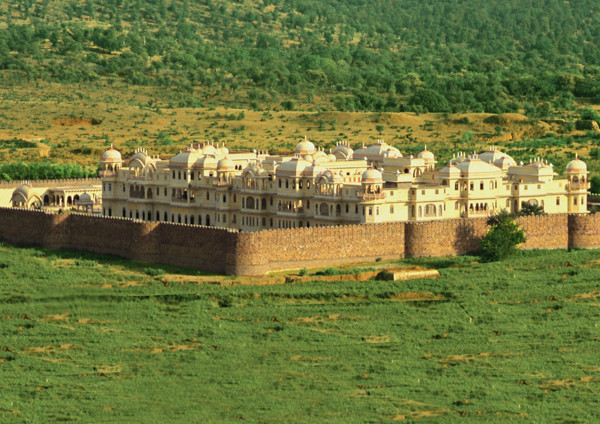Ranthambore Fort-is one of the six forts included in the World Heritage Site from Rajasthan. Situated within Ranthambore Tiger Reserve, the fort is known for the glory and valor of Hammir Dev of the Chauhan dynasty. The fortress of Ranthambore founded in 944 is considered second largest fort in Rajasthan after Chittorgarh. Raja Sajraj Veer Singh Nagil (880 to 935 AD) was the first ruler of Ranthambore who developed and raised infrastructure to make this area suitable for defense. After the defeat of the Chauhan king Prithviraj Chauhan by Muhammad of Ghori in 1192, Ranthambore, led by Govinda Raja, son of Prithviraj, became the center of Chauhan resistance to the expanding Sultanate of Delhi. The fortress passed to the Kachwaha Maharajas of Jaipur in the 17th century, and it remained part of Jaipur state until Indian Independence.

Inside Ranthambore fort there are three Hindu temples dedicated to Ganesh, Shiva and Ramlala ji constructed in 12th and 13th centuries from red Karauli stone. There is also a Jain temple of Lord Sumatinath (5th Jain Tirthankar) and Lord Sambhavnath.

Ranthambore National Park – Ranthambhore was established as the Sawai Madhopur Game Sanctuary in 1955 by the Government of India and was declared one of the Project Tiger reserves in 1973. Ranthambore became a national park in 1980. In 1984, the adjacent forests were declared the Sawai Man Singh Sanctuary and Keladevi Sanctuary, and in 1991 the tiger reserve was enlarged to include the Sawai Man Singh and Keladevi sanctuaries. Ranthambore wildlife sanctuary is known for its tigers and is one of the best places in India to see these animals in their natural jungle habitat. Tigers can be easily spotted even in the daytime. The best times for tiger sightings at Ranthambore National Park are in November and May. The park’s deciduous forests are characteristic examples of the type of jungle found in Central India. Other major wild animals include leopard, nilgai(blue bull), wild boar, sambar, striped hyena, sloth bear, southern plains gray langur (Semnopithecus), rhesus macaque and chital. The sanctuary is home to a wide variety of trees, plants, birds and reptiles, as well as one of the largest banyan trees in India.
There are many water bodies located all over the park, which provide perfect relief during the extremely hot summer months for the forest inhabitants. A huge fort, after which the park is named, towers over the park atop a hill. This National park is a wildlife enthusiast and photographer’s dream. It offers excellent accommodation and internal transportation facilities. The park remains open every year from October to May. Famous for the exciting and frequent tiger sightings captured dramatically in several books, this park is today affected by ecological pressures and poaching.
Ranthambore National park is a wildlife enthusiast and photographer’s dream. It offers excellent accommodation and internal transportation facilities and remains open every year from October to Mid June.
Attraction in Ranthambore
Ranthambore National Park
Rajasthan wildlife tour
Ranthambore Camps Tent Stay
